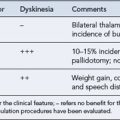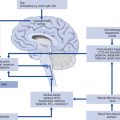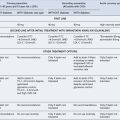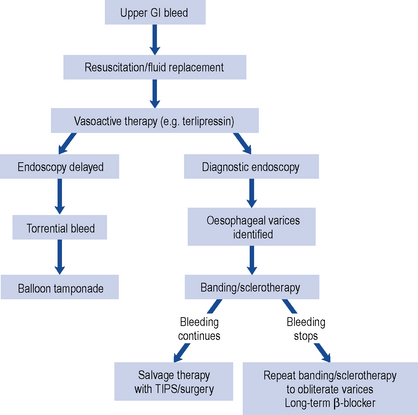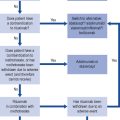Chapter 9 Neonates
The earliest in pregnancy at which newborn babies can sometimes survive is around 23 weeks’ gestation, when survival is about 10% for liveborn babies. Conventionally, any baby born at less than 32 weeks is regarded as being at relatively high risk of death or disability. About 7.5% of all births are technically ‘premature’ (<37 weeks) but only 1.4% of births take place before 32 weeks of gestation. Likewise, 7% of all babies are low birth weight (LBW), for example, <2500 g, and 1.4% are very low birth weight (VLBW). However, it is the gestation at birth rather than the birth weight which is of more practical and prognostic value. The definitions of selected terms used for babies are given in Table 9.1.
Table 9.1 Definitions of terms
| Normal length of human pregnancy (term) | 37 up to 42 completed weeks of gestation |
| Preterm | <37 weeks of gestation at birth |
| Post-term | 42 completed weeks onwards |
| Neonatal period | Up to the 28th postnatal day |
| Low birth weight (LBW) | <2500 g |
| Very low birth weight (VLBW) | <1500 g |
| Extremely low birth weight (ELBW) | <1000 g |
Major clinical disorders
Respiratory distress syndrome (RDS)
Similarly, the introduction of exogenous surfactant, derived from the pig or calf, has revolutionised the management of RDS. Natural surfactants derived from animals are currently more effective than artificial synthetic ones. The first dose should be given as soon as possible after birth since the earlier it is given, the greater the benefit (Soll, 1999).
There are several other important ways of treating babies in respiratory failure. Inhaled nitric oxide dilates pulmonary arterioles and lowers the excessive pulmonary blood pressure which often complicates respiratory failure. Persistent pulmonary hypertension may also complicate early onset septicaemia and meconium aspiration syndrome; in term and near-term babies, nitric oxide is both more effective than the previous drug therapies and much less likely to lead to systemic hypotension. However, it does not reduce mortality or major complications when used in babies with birth weights less than 1500 g (Van Meurs et al., 2005).
For some babies of at least 34 weeks of gestation and at least 2 kg birth weight, extracorporeal membrane oxygenation (ECMO), in which a baby is in effect put on partial heart–lung bypass for a few days, may be life-saving when ventilation and nitric oxide fails (ECMO Collaborative Trial Group., 1996).
Bronchopulmonary dysplasia (BPD)
BPD leads to increases in both pulmonary artery pressures and lung water content. The consequent strain on the heart can lead to heart failure, with excessive weight gain, increasing oxygen requirements and clinical signs such as oedema and a cardiac ‘gallop’ rhythm. The first-line treatment for heart failure, as in any age group, is with diuretics. Thiazides improve pulmonary mechanics as well as treating heart failure (Brion et al., 2002). Sometimes furosemide is used but its side effects are significant urinary loss of potassium and calcium, and renal calcification. An alternative is to combine a thiazide with spironolactone which causes less calcium and potassium loss. By reducing lung water content, diuretics can also improve lung compliance and reduce the work of breathing. However, BPD is not routinely treated with diuretics, since many babies do well without them. Systemic hypertension sometimes occurs among babies with BPD and may need treatment with antihypertensive drugs such as nifedipine.
For some babies with severe BPD, in whom echocardiography demonstrates pulmonary arterial pressures close to, or greater than, systemic pressure, many neonatologists try sildenafil, as there has been considerable experience using this drug off-label to prevent pulmonary hypertensive crises in babies after cardiac surgery. However, sildenafil has very variable pharmacokinetics in babies, so the dose is difficult to define, and the commonly recommended upper limit of 2 mg/kg four times a day may not be sufficient for some babies (Ahsman et al., 2010).
Infection
Important pathogens in the first 2 or 3 days after birth are group B β-haemolytic streptococci and a variety of Gram-negative organisms, especially Escherichia coli. Coagulase-negative staphylococci and Staphylococcus aureus are more important subsequently. In general, it is wise to use narrow-spectrum agents and short courses of antibiotics whenever possible, and to discontinue blind treatment quickly, for example, after 48 h if confirmatory evidence of bacterial infection, such as blood culture, is negative. The most serious neonatal infections are listed in Table 9.2.
| Septicaemia | Staphylococcus epidermidis, group B streptococci, Escherichia coli |
| Systemic candidiasis | Candida spp. |
| Necrotizing enterocolitis | No single causal pathogen |
| Osteomyelitis | Staphylococcus aureus |
| Meningitis | Group B streptococci, E. coli |
Necrotizing enterocolitis (NEC)
NEC is an important complication of neonatal intensive care, and can arise in any baby. However, it most commonly occurs in premature babies and those already ill. It is especially associated with being small for gestational age, birth asphyxia and the presence of a PDA. Since many sick babies have multiple problems, it has been difficult to disentangle causal associations from spurious links to conditions that occur anyway in ill infants, such as the need for blood transfusion. There is general agreement that the pathophysiology is related to damage of the gut mucosa, which may occur because of hypotension or hypoxia, coupled with the presence of certain organisms in the gastro-intestinal tract that invade the gut wall to give rise to the clinical condition. It almost never arises in a baby who has never been fed, whilst early ‘minimal’ feeding, and initiating feeding with human breast milk, appears to be protective. Probably the most important protection that can be given exogenously is enteral probiotics (AlFaleh & Bassler, 2008).
Haemorrhagic disease of the newborn
There are several possible strategies for giving vitamin K with a view to preventing haemorrhagic disease. An intramuscular injection of phytomenadione 1 mg (0.5 mL) can be given either to every newborn baby or selectively to babies who have certain risk factors such as instrumental delivery, preterm birth, etc. Vitamin K can be given orally, so long as an adequate number of doses is given, and this has been shown to be effective in preventing disease (Wariyar et al., 2000). Intramuscular injections are an invasive and unpleasant intervention for the baby since muscle bulk is small in the newborn, and particularly the preterm, and other structures such as the sciatic nerve can be damaged even if the intention is to give the injection into the lateral thigh. Intramuscular injections can be reserved for those babies with doubtful oral absorption, for example, all those admitted for special care, or at high risk because of enzyme-inducing maternal drugs such as anticonvulsants.
Apnoea
Episodes of apnoea and bradycardia can be treated in three ways: intubating and mechanically ventilating the baby, giving nasal continuous positive airway pressure (nCPAP) or giving respiratory stimulants such as caffeine or doxapram. The main goal of medical treatment is to reduce the number and severity of the episodes without having to resort to artificial ventilation. Caffeine both reduces apnoea in the short term, and improves long-term outcome (Schmidt et al., 2006). Doxapram is occasionally given as an adjunct to both caffeine and nCPAP, to avoid resorting to mechanical ventilation. Most clinicians stop giving respiratory stimulants when the baby is around 34 weeks of postmenstrual age, by which time most babies will have achieved an adequate degree of cardiorespiratory stability and no longer need even the most basic forms of monitoring device.
Seizures
Hypoxic–ischaemic encephalopathy (HIE), which usually results either from intrapartum asphyxia or from an antepartum insult such as placental abruption, is an important cause of seizures. Convulsions are a marker of a more severe insult; they usually occur within 24 h of birth and may last for several days, after which they spontaneously resolve. The less severely affected babies quickly return to neurological normality. No drug has been shown to improve outcome when given after the insult has occurred, but cooling a baby to between 33 and 34 °C for 72 h has been shown to improve the degree of neuro-disability among survivors and has rapidly become standard therapy (Edwards et al., 2010).
Principles and Goals of Therapy
Patient and parent care
Answers
Answers
Ahsman M.J., Witjes B.C., Wildschut E.D., et al. Sildenafil exposure in neonates with pulmonary hypertension after administration via a nasogastric tube. Arch. Dis. Childhood. Fetal Neonatal Ed.. 2010;95:F109-F114.
AlFaleh K.M., Bassler D. Probiotics for prevention of necrotizing enterocolitis in preterm infants. Cochrane Database of Systematic Reviews Issue. (1):2008. Art No. CD005496. doi: 10.1002/14651858.CD005496, Available at: http://pub2clinical/pdf/CD005496_standard.pdf
Brion L.P., Primhak R.A., Ambrosio-Perez I. Diuretics acting on the distal renal tubule for preterm infants with (or developing) chronic lung disease. Cochrane Database of Systematic Reviews Issue. (1):2002. Art No. CD001817. doi: 10.1002/14651858.CD001817, Available at: http://onlinelibrary.wiley.com/o/cochrane/clsysrev/articles/CD001817/frame.html
ECMO Collaborative Trial Group. UK collaborative randomised trial of neonatal extracorporeal membrane oxygenation. UK Collaborative ECMO Trial Group. Lancet. 1996;348:75-82.
Edwards A.D., Brocklehurst P., Gunn A.J., et al. Neurological outcomes at 18 months of age after moderate hypothermia for perinatal hypoxic ischaemic encephalopathy: synthesis and meta-analysis of trial data. Br. Med. J.. 2010;c363:340.
Schmidt B., Roberts R.S., Davis P., et al. Caffeine therapy for apnea of prematurity. N. Engl. J. Med.. 2006;354:2112-2121.
Soll R. Early versus delayed selective surfactant treatment for neonatal respiratory distress syndrome. Cochrane Database of Systematic Reviews Issue. (4):1999. Art No. CD001456
Van Meurs K.P., Wright L.L., Ehrenkranz R.A., et al. Inhaled nitric oxide for premature infants with severe respiratory failure. N. Engl. J. Med.. 2005;353:13-22.
Wariyar U., Hilton S., Pagan J., et al. Six years’ experience of prophylactic oral vitamin K. Arch. Dis. Childhood. Fetal Neonatal Ed.. 2000;82:F64-68.
Lissauer T, Fanaroff A.A., editors. Neonatology at a Glance. Oxford: Wiley-Blackwell, 2006.
Northern Neonatal Network. Neonatal Formulary: Drug Use in Pregnancy and the First Year of Life, fifth ed. Oxford: Wiley-Blackwell; 2006.
Rennie J.M., Robertson N.R.C. A Manual of Neonatal Intensive Care, fourth ed. London: Arnold; 2002.
Young T.E., Magnum B. NeoFax: A Manual of Drugs Used in Neonatal Care, 22nd ed. Montvale: Thomson Reuters; 2009.

